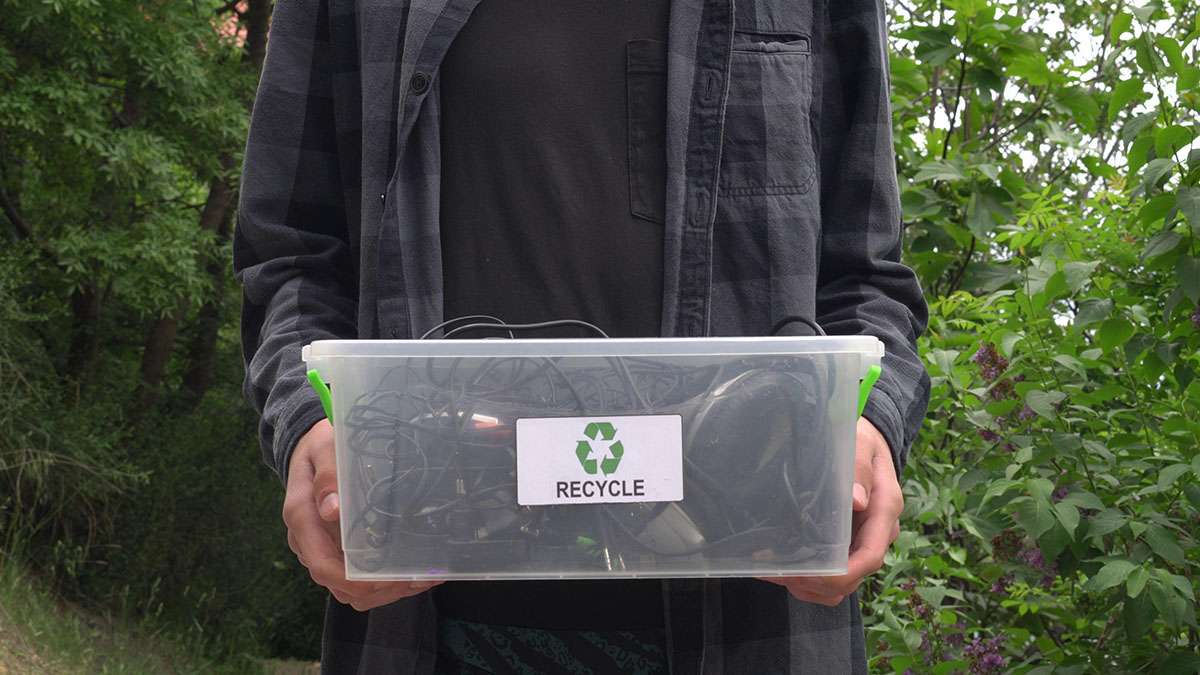Most American adults own several smart devices such as smartphones, smartwatches, or fitness trackers. These devices make our lives easier, helping us access information and support with a touch of a button. When big tech companies release more technologically advanced versions of their products, it’s natural that consumers ditch their old devices for the new ones. New features aside, one of the common reasons people choose to upgrade their smart devices is to attain better battery life.

Some consumers rely on technological advancements for health care, making new purchases necessary. Every time an individual upgrades their smart device, however, they leave an ecologically degrading challenge behind. They can decrease the adverse impact of their upgrades by engaging in five sustainable e-waste practices.
The Problem with E-Waste
The U.S. produced nearly 6.92 million tons of e-waste in 2019. We recycled about 15% of the materials, leaving a large quantity of landfill pollution behind. Some countries incinerate or illegally trade their e-waste, creating additional environmental challenges.
Our electronics contain mercury, lead, cadmium, brominate, beryllium, and more, causing adverse ecological and human health effects. Inadequate transportation and waste management techniques cause toxins to pollute the air, soil, and oceans. When e-waste heats up, it releases air pollutants into the atmosphere, fueling climate change.
Another adverse effect of e-waste derives from foreign trading. Some regions illegally purchase old electronics, pulling out valuable materials. Unfortunately, inadequate training and safety measures increase the workers’ exposure to toxic fumes.
Until consumers and manufacturers work together to reduce e-waste, the environmentally degrading cycle will continue. Some governments are developing laws and regulations, holding companies responsible for their products throughout their life cycles. While officials work on passing and enforcing e-waste laws, consumers can take the initiative and limit their pollution contribution. Here’s how.
1. Repair Broken Parts
Many gadgets consuming our landfills have fixable exterior damage. When a smartphone’s or smartwatch’s screen breaks, individuals usually check their eligibility for an upgrade. Replacing the glass on an electronic device is relatively simple, and many consumers can change out screens at home. The same can be done for some smart devices with faulty batteries.
2. Resell and Buy Used
Some individuals may need the latest technology to succeed in their occupation. For example, a farmer may need the latest cattle tracker to keep track of his growing herd. In upgrade-reliant cases, consumers can sell or donate their old devices rather than throwing them away. Reselling gives products a second life, reducing unnecessary landfill waste. Trading in old smart devices can also be another option.
Consumers can also choose to purchase used electronics to minimize e-waste challenges. Many companies, such as Amazon®, Apple®, and Walmart®, sell refurbished smart devices at a reduced cost, helping individuals save money and help protect the environment.

3. Purchase All-in-One Devices
A new study found that e-waste is declining as Americans ditch cathode-ray tube (CRT) TVs and bulky computer monitors. Many consumers opt for smaller devices, such as smartphones, smartwatches, and smart assistants that do it all. They can use their smartphones to work and send messages, watch TV, and more.
America promotes a “more is better” mentality. When individuals purchase new electronics, it is essential to look beyond that lens and consider the effects of future e-waste.
4. Weigh the Pros and Cons of Upgrades
For some consumers, upgrades are essential. If you are an avid camper, you may need a water-resistant smartphone, or a smartwatch, with extended battery life to ensure your safety in the woods. A retired grandmother might opt to get a smartwatch to monitor her health, keep track of her messages, and listen to the audio instead of getting a separate device for each functionality.
When you purchase a smart device, it is crucial to weigh the pros and cons. Receiving an upgrade can provide consumers with appealing new features, but many do without them until the same features become available on the open-box or second-hand market. It is far more sustainable to opt-out of an upgrade if and when you can.
5. Repurpose Old Electronics
Consumers can also reduce e-waste by repurposing old or unused electronics. For example, individuals can turn their bulky computer monitors into a TV screen using an HDMI cable. Many people use laptops for remote work and can reuse their previous appliances instead of throwing them away.
Advancing the Sustainability of Electronics

Individuals can enhance the longevity of their smart devices and reduce energy-related emissions by using electronics sustainably. They may connect their appliances to smart power strips, limiting unnecessary energy draw. Additionally, consumers can set timers on their smartphone apps, decreasing the amount of time spent using their electronics.
How Ambiq Contributes
As a certified Sony Green Partner, Ambiq® is firmly committed to developing technology components that will contribute to a lower overall carbon footprint. Ambiq recognizes the importance of building crucial pieces of technology that will enable solutions that provide the maximum amount of power for the least amount of energy.
Ambiq’s ultra-low power solution SoCs are engineered with SPOT® technology, to provide long life and high performance to battery-powered wearables, mobile IoT devices, and other pieces of powerful mobile technology and help reduce the need to consume more power.
While there’s still much work to be done to reduce CO2 levels around the globe, every small change can add up to a larger solution. Not only do power-efficient electronics help reduce our overall carbon footprint, but they also provide cutting-edge user experiences that don’t require devices being tethered to a power outlet. Ambiq’s commitment to powering technologies that can reduce or eliminate the need to draw more energy from batteries can greatly help device developers build sustainable equipment.


